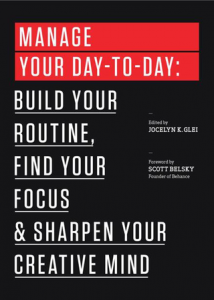 In recent weeks I have been using my annual spring/summer sabbatical from publication layout work to develop several of my own creative projects…simultaneously. What I’m hoping is that by summer’s end, everything will come together in one grand fait accompli. I have a detailed game plan for each project. I have to-do lists based on ‘Critical Inch’ thinking. And each morning, I put my feet on the floor and get right to work. But it’s a rare day that I actually accomplish everything I set out to do.
In recent weeks I have been using my annual spring/summer sabbatical from publication layout work to develop several of my own creative projects…simultaneously. What I’m hoping is that by summer’s end, everything will come together in one grand fait accompli. I have a detailed game plan for each project. I have to-do lists based on ‘Critical Inch’ thinking. And each morning, I put my feet on the floor and get right to work. But it’s a rare day that I actually accomplish everything I set out to do.
It seems there’s always something to derail my best laid plans: a loyal client in need of a random project with a tight deadline, a roadblock created by equipment or software conflicts, or a seductive offer by someone who wants me to play hooky for the day. So although at the moment my time is completely my own, I don’t always make the best use of it to further my creative goals.
In the past month however, I have discovered three inspiring resources that have made a tremendous contribution to my productivity: one book and two apps.
The book is titled Manage Your Day-to-Day: Build Your Routine, Find Your Focus, and Sharpen Your Creative Mind. Published by 99U, it contains a series of essays by freelancers and entrepreneurs offering their insights on how to maintain creativity and productivity in an increasingly distracting world. No matter how busy you think you are, it’s well worth taking time to read it. And if you have a Kindle and subscribe to Amazon Prime you can borrow it free of charge!
App #1 is called RescueTime , a free downloadable app that monitors how you spend your time on the computer and generates a weekly report. It’s customizable according to your routine tasks and activities and can be a real eye-opener for those who are wondering why their days disappear so quickly without yielding productive results.
App #2 is called FocusBooster, another free downloadable app that consists of a simple 25/5 minute timer. It’s based upon the Pomodoro Technique, “a time management method created by Francesco Cirillo in the 1980’s. The technique uses a timer to break down periods of work into 25-minute intervals (referred to as “pomodoros”) separated by breaks and is based on the idea that frequent breaks can improve mental agility.” Although deceptively simple, this method of dividing your workday into manageable bursts of activity with breaks in between is a remarkably effective productivity tool.
 Celeste Heiter is the author of Turn Your PC into a Lean Mean Freelancing Machine, the creator of the LoveBites Cookbook Series for Kindle Fire, and the author of Potty Pals , a potty-training book for children. She has also written ten books published by ThingsAsian Press; and spent eight years posting her recipes, food photographs, and film reviews on ChopstickCinema .
Celeste Heiter is the author of Turn Your PC into a Lean Mean Freelancing Machine, the creator of the LoveBites Cookbook Series for Kindle Fire, and the author of Potty Pals , a potty-training book for children. She has also written ten books published by ThingsAsian Press; and spent eight years posting her recipes, food photographs, and film reviews on ChopstickCinema .
Visit her website, and her Amazon Author Page.




